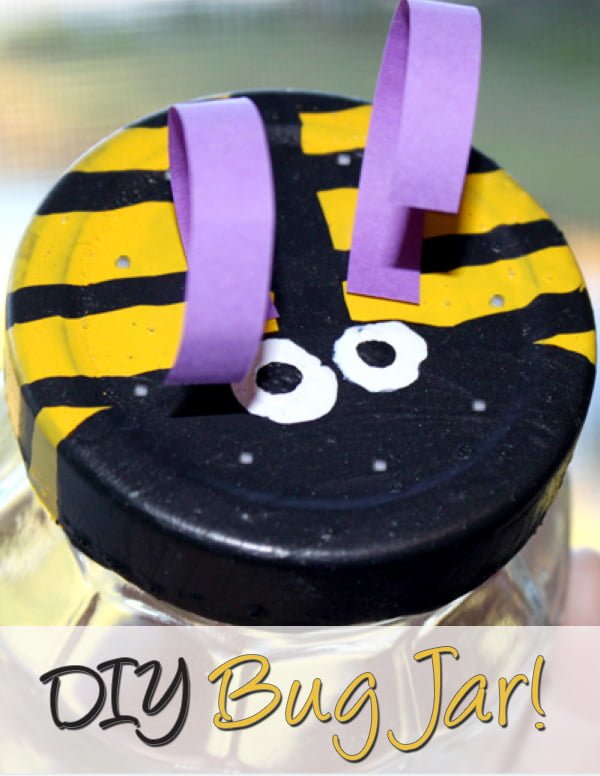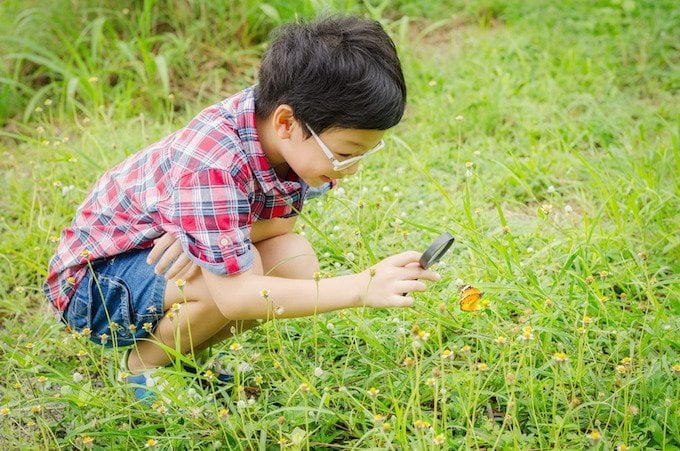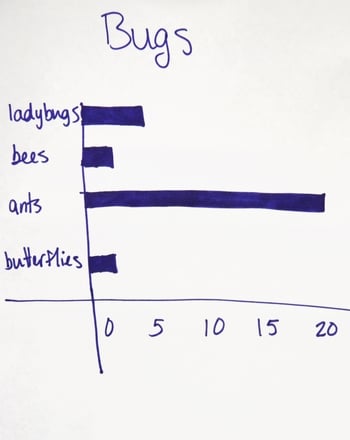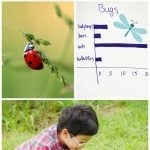Outdoor Science Activity: Backyard Bug Count
When it comes to kids and bugs, there’s a natural enthusiasm. While a backyard bug count may give you the chills, your child will probably become obsessed with the mesmerizing curling and uncurling of a pill bug or the never ending charm of a lady bug.
Want to take advantage of these simple thrills while boosting math and science knowledge at the same time? Try taking a walk outdoors with your young biologist, and give them some practice observing, tallying, and categorizing the insects you find along the way.
The benefits of Vitamin N (nature) are plentiful for all of us. If you can help foster your child’s natural love of nature, you’ll help set them up for a lifelong appreciation (and desire to protect) their natural surroundings.
Observing and questioning go hand-in-hand. When children notice details in nature, curiosity follows. With a little encouragement, children are sure to apply their innate questioning skills to all they observe outdoors. Once they get going, you may need to brace yourself for an onslaught of questions!
Here’s a simple hands-on activity to try together – the great backyard bug count.
What You Need for a Backyard Bug Count
In this activity your child will simply observe and count. You don’t have to collect the insects, but below you’ll find directions for a DIY humane bug jar for observing and releasing.
Here’s what you’ll need:
- A patch of bug-filled open space… yard, park, or neighborhood garden
- Paper
- Pencil
- Ruler
- Clipboard
Start Observing and Counting Bugs!
Being of shorter stature in an adult-sized world makes for a unique perspective. When forced to look up at everything, kids can’t help but see things differently and notice things that adults don’t. And, perhaps because life in all its wonder and beauty has not yet become monotonous, children pay great attention to the new sights, sounds and experiences they encounter each and every day.
Kids by nature are powerful observers. Science requires that same keen observation.
Discuss with your child the type of insects they’d expect to find when you take your walk. They may suggest ladybugs, ants, bees, pill bugs, and butterflies.
Make a chart showing these insects, and also leave some blank spaces for any other bugs you find along the way.
Place the chart on a clipboard so you can walk around and take notes. Get outdoors, whether it’s your yard, a park, or a neighborhood garden.
Have your child make a tally mark in the appropriate column each time they spy an insect. You may want to add an “unknown insect” category to your chart, just in case you come across anything that’s not easily identifiable. While you’re walking, take time to observe the insects, noting their size and pattern of movement (flying, crawling, or both).
Make a bar graph to show the insects you found. List the types of bugs on the left, and then on the horizontal line, the Y-axis, write numbers 0 to the greatest amount you tallied. Using your tally chart, help your child make bars to show the data. For example, if your data shows 4 bees, draw a bar to number 4 on the graph.
Continue until you and your child have represented all of the tally marks on the graph.
Discuss the data shown on the graph. Have your child tell you what each bar shows. Ask them which insects they saw most or least often.
Explain how bar graphs make your comparison of insects easy and fun. They’re also a skill that will show up in math classes.
Encourage Their Interest in Nature
Keep the momentum going by helping your children find answers to their questions. Head to the library, search the internet, or visit the zoo or a museum. Better yet, take it a step further and guide your kids in gaining insight into their questions through additional observations. Assist your children in observing insects near flowers of different colors.
How many insects did you count near each different color flower?
Did one color attract more insects than others?
Encourage your children to watch the drip of ice cream on the sidewalk.
Do they notice any ants near the drip?
How many?
How long did it take ants to find the puddle?
By making similar observations, scientists find answers to their questions in much the same way.
Observing and questioning are essential components of scientific discovery. The natural world just outside your front door provides limitless opportunities for your children to practice these skills.
DIY Humane Bug Catching Jar
If your child would like to observe some of their bug friends a little longer, you can make a humane bug observation jar.

It makes a fun and easy DIY project for kids. Here’s what you need:
DIY Bug Jar Supplies
- mason jar or any clear food jar
- nontoxic paint
Directions
- Have a parent poke holes in the lid.
- Paint the lid. We chose yellow for the lid. Once it was dry, we added black stripes and a pair of fun eyeballs.
- Embellish as your child likes. We finished the jar off with a couple of antenna made from a leftover piece of a sticky note. You can use pipe cleaners, wire or any found item in place of the paper to make it more durable for outside play.
- Gently catch bugs. Add them to the jar and secure the lid.
- Observe your new little friends and take photos if your child likes.
- Gently release the bugs back where you found them.
Remind children to always be careful around insects, plants, or bodies of water that could be dangerous, and always leave nature as you found it.



